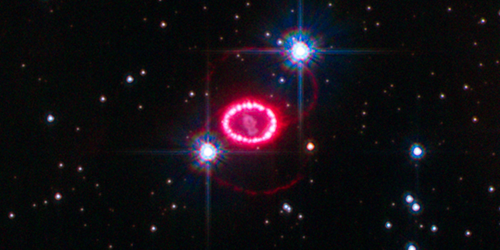Supernovae Could Confess Neutrinos’ Secrets
Neutrinos are notoriously elusive. Interacting only via the weak force and gravity, they pass through regular baryonic matter almost unhindered. But like members of an exclusive social clique, neutrinos might be less standoffish among particles of their own type. Some beyond-standard-model theories predict a “secret” interaction that would cause neutrinos to scatter from one another when they gather at high enough densities. Po-Wen Chang at Ohio State University and his colleagues have now shown that, according to one neutrino-emission model, the effect of this neutrino self-interaction ( SI) could show up in future observations of supernovae [1].
The team considers a core-collapse supernova that leaves behind a neutron star while producing a prodigious quantity of neutrinos. In the absence of SI, these neutrinos should diffuse out of the nascent neutron star in around 10 seconds. The particles should then follow free trajectories to our detectors. But if SI occurs, Chang and colleagues predict that neutrinos could form an expanding “neutrino fluid” in which the particles scatter from each other and propagate randomly. Only when the neutrino density drops below a threshold—determined by the interaction cross section—would the neutrinos begin their free trajectories.
As this SI scenario involves emission from a much larger source region than the standard-model case, it could extend the time period over which neutrinos arrive from a supernova. To date, the only supernova neutrinos detected are the roughly 20 electron antineutrinos from SN 1987A, whose arrival times were consistent with the standard model. Recent advances in neutrino detection mean that researchers could detect thousands of neutrinos of all flavors from the next nearby supernova, increasing the likelihood of observing new physics.
–Marric Stephens
Marric Stephens is a Corresponding Editor for Physics Magazine based in Bristol, UK.
References
- P.-W. Chang et al., “Toward powerful probes of neutrino self-interactions in supernovae,” Phys. Rev. Lett. 131, 071002 (2023).




